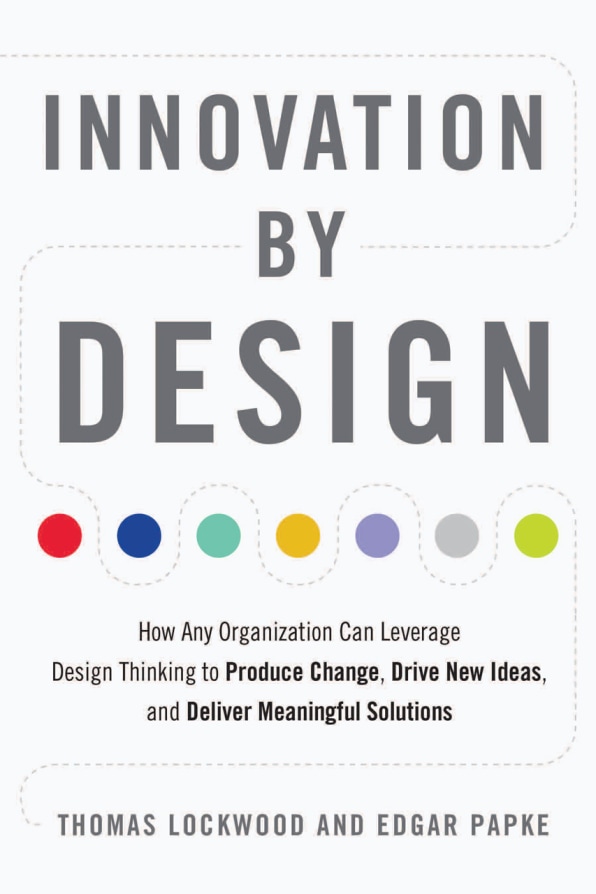The accounting software company embraces design at all levels of the organization, but it wasn’t easy getting there. Thomas Lockwood and Edgar Papke detail Intuit’s journey.
More than a decade ago, Scott Cook decided that the company he founded, the accounting software firm Intuit, needed to become more innovative. So he started to encourage all employees to spend 10% of their time on unstructured projects.
His inspiration came from Google’s 20% unstructured time model. (Being that Intuit is an accounting software company, Cook thought that 10% seemed more prudent.) Shortly thereafter, he was further inspired by an article about design thinking written by Roger Martin at Rotman University in Toronto. Design thinking had been a method of problem solving used by designers for many years, and now a business school was suddenly getting press about its application as a creative way to solve business problems. Cook learned it was about using abductive reasoning for problem-solving, versus deductive or inductive reasoning. As he absorbed more about design thinking, he wondered whether it could help his accounting software company be more innovative. Along with his increasing knowledge about design thinking came the company’s realization that, as the 10% of unstructured time initiative moved on, Intuit employees didn’t know how to spend the time well.

 . Image: Career Press]
. Image: Career Press]In 2007, to reinvigorate Intuit’s performance, Cook and then-CEO Steve Bennett decided to focus on the role of design in the company. Cook created a one-day program he called Design for Delight (D4D) and invited the company’s top 300 managers to an off-site meeting. Based on deep customer empathy, idea generation, and experimentation, D4D was created to clearly articulate Intuit’s approach to design thinking and to provide the entire company with a common framework for building great products. Cook then delivered a five-hour PowerPoint presentation to which he received a polite, yet unengaged response.For the offsite, Cook also invited Alex Kazaks, an associate professor from Stanford, to present for an hour. Kazaks took a different approach to his segment: Rather than present from a PowerPoint, he engaged the audience in a design thinking experience including prototyping, feedback, iterating, and refining. When asked, two-thirds of the off-site participants provided the feedback that most of what they learned occurred in Kazaks one-hour presentation and the hands-on activity. Cook understood the significance of the moment and realized that a shift in Intuit’s culture was badly needed. This prompted what has become the journey of Intuit toward embedding design thinking into the company’s culture.
When I (Thomas Lockwood) was president of the Design Management Institute, part of my role was overseeing all content and programming for DMI, which included developing three conferences per year (in the United States, Europe, and Asia); during my six-year tenure, I produced 22 conferences for design leaders. I decided to run the 2009 U.S. conference in San Francisco and invited Roger Martin and Darrel Rhea to join me as co-chairs. They called it Re-Thinking Design and invited Scott Cook to be a speaker. It was one of the first conferences about design thinking, and the first time DMI had a CEO speak at a conference. As much as Scott had a great impact on the audience, the conference and its passionate design leaders in attendance also had inspired him.
This may have led to the second step in Intuit’s design thinking journey: the development of a team of design thinking coaches. The team consisted of aptly named “Innovation Catalysts,” whose role was to work with managers throughout the company in their product initiatives. The idea is not to offer the direct expertise to solve a problem, but rather, to offer managers and teams the means through which to apply design thinking. Over the past decade, more than 1,500 Innovation Catalysts have been trained, and taken three, five, or 14 days of design thinking leadership training. The training is all done internally, employee to employee.
The Innovation Catalyst idea came from early benchmarking with Procter & Gamble. The key was selecting people interested in design thinking to become catalysts, not just because they were skilled at it, but because they also have a passion for it and, in their words, “can turn the lights on” for other people and unleash their creativity. Many of the company’s Innovation Catalysts don’t even have what would be considered creative jobs (accountants, for example). The company’s key discovery is that design thinking is not about the roles that people occupy; it’s about people, and their interest to collaborate, be creative, participate, seek to understand, have empathy, and create solutions. And it’s about the unexpected results that come with it.
As an example, a group that primarily focuses on TurboTax, and is very product- and feature-driven, is always looking for insights and inspiration into the not-so-inspirational world of how people do tax returns. To use their creative time, they often explore how to make improvements in the way products are sold. During a two-day design thinking workshop, one team had taken on an experiment that failed and needed a new problem to fill their remaining time. One of the team members raised the question as to why the product they were working on was only sold in seats of five and not in single seats. They concluded that perhaps someone in product management, at one point in time, thought that selling multiple seats was the optimal way to sell.
To test their idea, the team suggested changes to the script used in the call center. They then ran some quick tests right then, on the fly, with call center staff, customers, and prospects. In a very short period of time they learned that many more people were interested in buying just one seat, or three seats. As a result, after further testing, they changed their policy to sell individual and smaller numbers of seats. What was the result of this small customer-centric, quick prototype test? A $10 million increase in sales in the first year.
In another example, Intuit’s finance organization recognized that 25% of their customers didn’t update their credit cards in time and were cut off from service. They questioned why customers did not respond to their emails in advance of the expiration date. After some contextual research with customers, and through the use of some open-ended questions, they soon discovered that in about 25% of the small businesses using QuickBooks, Intuit’s emails were not finding the right person. Unfortunately, from the customer’s point of view, suddenly one day QuickBooks stopped working and left them feeling frustrated or angry at the company. The group ran a series of small experiments on how to keep contact information up-to-date and to find better ways to communicate with their customers. The company estimates recovering approximately $8 million a year in lost revenue, simply by improving communication and engagement with customers in keeping billing information up-to-date.
To further embed design thinking into the culture DNA, the company organized a series of D4D forums, which were attended by more than 1,000 employees each. At the forums, employees heard success stories, listened to experts talk about design and design thinking, and were asked at a personal level to initiate change in how they did their jobs. In other words, the company was asking every employee to apply design thinking to their individual roles in the company.
Another key step in Intuit’s journey was the integration of design thinking into its approach to leadership development. This meant not just exposing them to design thinking and getting the help of catalysts, but rather, leaders learned to directly apply design thinking to how they and their teams solved problems. There’s evidence of the influence of design at the executive ranks as well. In 2006, Intuit had six designers in positions at the executive level. By 2016, that number had increased to 35.
A few years ago the company realized that, as new executive leaders joined the company, they began to have more untrained executives. Knowing that design thinking had to be internalized, they began asking executives when they last visited a customer. Upon realizing the gap that existed, they set an agenda for every employee, at the director level and above, to go out 12 times a year with customers and other experts to try to develop new ideas and develop a point of view about the future. Recently, the company held an event involving the top 400 people in the company. Each person had to share his or her personal vision and, based on customer input, deliver new ideas for innovating in the future. Now being integrated as part of employee performance reviews, once a month, the top 400 people in the company have to demonstrate their plans for innovation that helps deliver a customer benefit.
Today, Intuit’s design thinking group, called the Innovation Capabilities Team, reports to the chief of staff in the office of the president. Having design thinking report directly into the office of the president, Brad Smith, is powerful evidence of the company’s continuing commitment to design thinking. The commitment that started with its founder, Scott Cook, not only carries on with the new CEO, it is enhanced. This is because the leadership at Intuit is aligned around the power of design thinking.
This article was adapted with permission from the forthcoming book Innovation By Design. Thomas Lockwood and Edgar Papke are partners in the consultancy InnoAlignment. Lockwood is an expert at integrating design and innovation practice into business, creative recruitment, and the author of Design Thinking and Corporate Creativity. Papke is a leadership psychologist and expert in business alignment, leadership and organizational culture. He is an award-winning speaker and author ofTrue Alignment and The Elephant in the Boardroom.
–
This article first appeared in www.fastcodesign.com
Seeking to build and grow your brand using the force of consumer insight, strategic foresight, creative disruption and technology prowess? Talk to us at +9714 3867728 or mail: info@groupisd.com or visit www.groupisd.com




